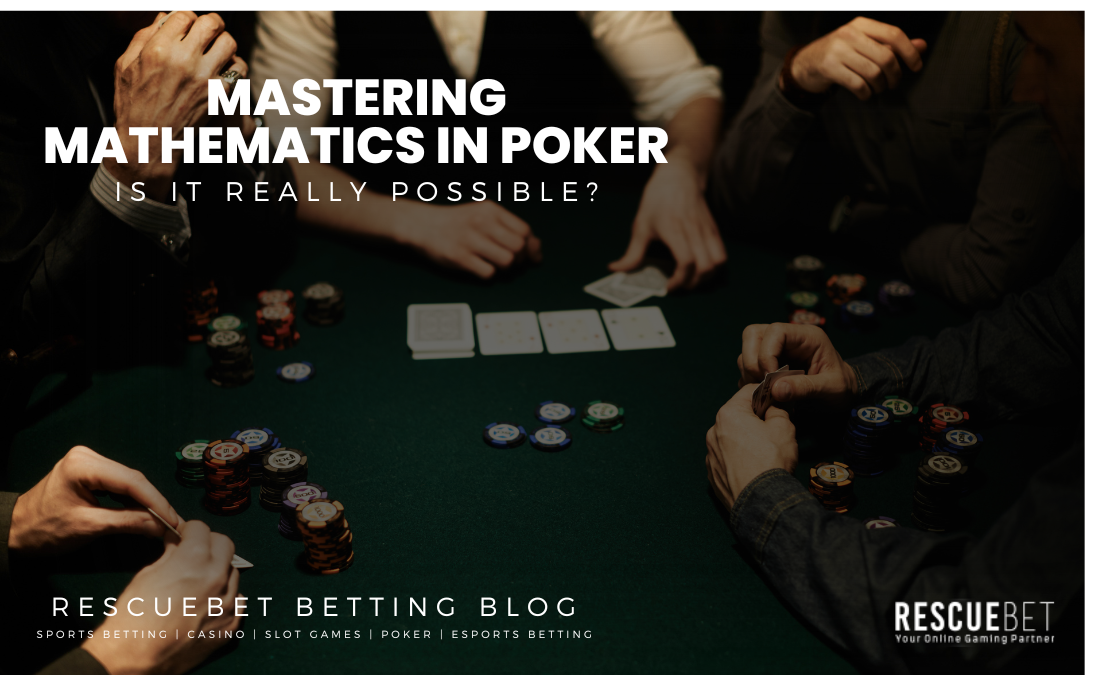Days are gone when punters visit a land-based casino to play poker or underground poker dens to make wagers on a skill-based game. Today, punters can use mathematics in poker from the comfort of their homes in online poker games across different casino providers. The legalization and regulation of gambling have led to the recognition and classification of games into skill and luck, with the talent given preference over luck-based games. Today, online skill-based games are the leading choice for punters who make logical wagers and understand how a decision impacts the outcome of an event.
Math In Poker
Punters can use mathematics in poker to separate the elements of luck from the aspects of skill, estimate probabilities of successfully bluffing, make predictions based on a punter’s bankroll, the table limits of different poker tables, and understand possibilities of other winning hands in poker.
1. Luck Versus Skill
Poker is a game that leans more towards skill than it does luck. Essentially, punters are uncertain when playing poker, including the cards dealt and the cards on the table or the river. The skill component comprises calculating the probability of winning a hand based on the cards on the table and the following cards dealt. Another critical skill is bluff, which helps players with weaker cards win more often by bluffing on softer hands.
2. Bluffing
Bluffing is a part of poker, and the most skilled poker players are adept at bluffing. However, to pull off a successful bluff, a punter must be calculative and keep track of the cards on the table and the probability of winning the round. For example, a player with just a pair could bluff another player with three of a kind that they potentially hold a flush if at least three river cards are of the same type (clubs, diamonds, hearts, or spades).
However, bluffing only works when you know that your opponent has a specific card type. Otherwise, it’s easy for an opponent to call your bluff. It should also be mathematically possible for your bluff to happen. Otherwise, a punter stands to lose. For example, if all the aces in a deck are dealt, a punter can’t bluff that they have a higher straight.
3. Bankroll
A punter’s bankroll dictates how they play and the types of wagers a punter is willing to make. A punter should be aware of their bankroll and other punters participating at the table. Punters can estimate their risk tolerance level and how a punter makes a wager, following other poker players’ betting styles and bankroll. Poker players with a lower risk tolerance tend to bluff less than poker players with higher risk tolerance. Secondly, a higher bankroll gives a punter more leverage and options in a poker game than a punter with a very small or limited bankroll.
4. Table Limits
Table limits are restrictions on the maximum wager a punter can place in a poker game. For example, a poker table may have a betting limit of $10,000, meaning no bet can exceed a maximum of $10,000 irrespective of the number of people at the table. Tables may also have a minimum stake to play, such as $1 or $10 to start a poker game. Punters should select table limits based on their funds and their poker style.
Some tables have no higher limits and allow punters to make wagers in the millions on each round—professional poker tournaments guide players with average winnings. Also, tournament winners take home close to $30 million in top poker tournaments.
5. Probabilities
Punters can estimate where a hand lies in the probability of winning a round of poker based on the levels of winning hands. For example, punters can win a poker game with a single high card. However, a pair beats a high card. Next, a tall team like Jack beats a pair of 10s or anything below Jack. After pairs, three is the next best hand, followed by a straight flush, four of a kind, straight flush, etc.
























